July Reviews: New & Celebrated Works

"From caring comes courage." - Lao Tzu
New finds, masterpieces, and an exclusive interview with biographer Carol Sklenicka
In this newsletter: "The Friend" a novel by Ingrid Nunez; "Collected Poems" by Mark Strand, "Boat Songs" by MJ Lenderman, "Astral Weeks Live" by Van Morrison, "The Duke" directed by Roger Michell, and an interview with acclaimed biographer Carol Sklenicka.
Please take a moment and give what you can to the Ukraine Red Cross. Ukraine needs our help. They are fighting for democracy for all of us.
FICTION
"The Friend" a novel by Sigrid Nunez.
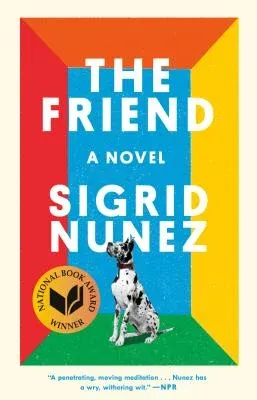
The Friend, the 2018 200-page novel by Sigrid Nunez that won the National Book Award, is on my list of the 100 best novels of all time. It sold well and was widely reviewed and yet, here I am featuring it four years after its release because no reviewer that I have read mentioned Nunez's incredible sleight-of-hand in the story, that is, in my opinion, the soul of this novel.
I've talked about this novel with many other readers. Many of them missed the trick or did not think it was important. After I shared with them what I believe is the secret of the book, most of them looked at me like I needed to take a walk. For me, the narrative device she uses is the point of the story. Or maybe I'll wake up and it was all a dream: and this isn't a shaggy dog story at all.
Lidija Haas of Harper's Magazine came close to exposing the trick when she wrote, "Sigrid Nunez’s sneaky gut punch of a novel is a consummate example of the human-animal tale. More for aesthetic than for moral reasons, the narrator gives up her attempt to write about a group of traumatized women with whom she’s been volunteering to slowly, painfully, construct instead the book we’re reading. Someone is being played here, but whether the game is at the reader’s expense or the subject’s (the dead mentor’s) remains deliberately unclear."
The reader is played, no doubt, but in a way that only adds to the emotional power of the novel.
Nunez's has said she wrote the first draft of this novel quickly in a straight flow. If that is true, then she constructed a novel that organically grew a plot that folded in on itself to answer the rage that roars under the surface of this book like a rip current.
Spoiler Alert. You might want to stop reading this review if you haven't read the book. On the surface, the story is about a woman writing teacher who takes care of a male writer's Great Dane after he committed suicide. As a teacher, the man preyed on vulnerable students sexually. Throughout the narrator's struggles to care for the large dog, she thinks about writing and the men she has encountered. She also happens to be teaching women to write about their trauma.
There is a scene near the end of the book where the narrator imagines visiting the male writer at his apartment. In this "imagined" scene, he survived the suicide attempt. There is no Great Dane. Instead, the male writer's small dog is in the room. The scene is realistic. The tone of the novel is different here. The narrator's anger at the male writer's predatory behavior toward female students is quiet but visceral. She is more than pleased that he will no longer be teaching vulnerable students. The narrator sees in that scene that the predatory writer has been ruined by his narcissism and entitlement, and deserves his fate.
The entire book shifts in the reader's hands. If the predator is alive, there is no longer a Great Dane to care for. So is Great Dane imagined? Is it her burden, her elephant in the room, an animal constructed of her complicated feelings toward the male writer? She seems changed after the visit to the surviving writer, her burdens different, and the Great Dane in the story begins to decline in health.
What of the butterflies that light upon the dying Great Dane at the end? I thought of old Nabobov pinning his netted butterflies to a cork board. In Nunez's story, the butterflies fly away.
Of course, I may be wrong, but if so, it's a good kind of wrong. The brilliant novel is available on Amazon, on most all bookselling platforms, and on order at your local bookstore. Highly recommended.
POETRY
"Collected Poems" by Mark Strand

I was fortunate to meet Mark Strand. I found him to be patient and generous even when challenged by difficult students. I did see him angry once, for good reason, but he never acted out. His laugh was honest and true.
His reading voice was singular without being unusual. He sounded warm and emotionally entangled in any poem he read, even when reading his student's poems aloud. Here are two short examples of his reading voice.
There are longer readings and talks he gave that are available on YouTube.
(I wrote a short story dedicated to him, Potato Blossoms, which is published in the Summer Issue of Portland Monthly Magazine available throughout Maine. I will post the story at dandomench.com when the PMM Summer Issue is no longer for sale on the shelves.)
The Collected Poems of Mark Strand presents his life's work chronologically. Reading this collection for the first time, I was humbled by his descriptive skills and powers of invention. He experimented with form throughout his life and his poems are never similar to each other. They hold up well.
This book takes you into the mind and heart of one of the USA's greatest poets and it is a pleasure to read. The collection is available in libraries, and on most bookselling platforms, and can be ordered at most local bookstores. Highly recommended.
NEW MUSIC
"Boat Songs" by MJ Lenderman
Warning Explicit Lyrics
The singer-songwriter-guitarist MJ Lenderman and his gritty little band came out of Asheville, North Carolina, but sounds like they rose out of the peat dust of the San Joaquin Valley. He is leading the way right now in what I would call garage band alternative country. The sound is edgy and fresh with echoes of the music I grew up with.
Think of what Neil Young with Crazy Horse would sound like today if Young was in his twenties. It's alt-country, punk, wall-of-sound, metal, and noise. His lyrics run from Pavement to Jay Farrar to Jason Molina with surprising emotional punch. There is an element of self-destruction in the writing in the new album Boat Songs. I hope he makes it through alive - that's the feeling at times.
When asked what you can expect at an MJ Lenderman live concert, he said, "We will cook." There is energy and intelligence in this music and that feels hopeful to me.
The following song "Left Your Smile" is from his great 2019 self-titled album MJ Lenderman.
His 2021 album Ghost of Your Guitar Solo is also fantastic. All of MJ Lenderman's albums are available on most streaming platforms.
LIVE MUSIC
"Astral Weeks Live at the Hollywood Bowl" by Van Morrison
If you told me you were down and needed your heart and soul lifted, this is the album I would hand to you. Van The Man has a new album out with a blues bar band sound that I may review later, but frankly, you can almost hear Morrison's frustration with that band. His new album made me thirsty to hear this masterpiece again.
In interviews, Morrison has often said that his struggle as a musician has always been to find backup musicians who can support what he wants to do on stage and in the recording studio. There is no question that for this live performance he found his soulmates. At times, you can hear him conducting the musicians and in the videos, you can see him giving them instructions with the nod of his head. He has always been more of a Count Basie than a troubadour.
When Astral Weeks, the studio album, first came out in November of 1968 it was a revelation for listeners and for musicians. It felt mournful at times and haunting. The lyrics were like a dream you were trying to remember.
Astral Weeks Live at the Hollywood Bowl released in 2009 is a different kind of revelation. You can hear Morrison and the band pulling and pushing at the audience and reacting to the crowd. The result is the best live Van Morrison album ever.
The concert video is available on YouTube. The audio version is available on Amazon and on any streaming platform.
SCREENS
"The Duke" directed by Roger Michell starring Jim Broadbent and Helen Mirren.
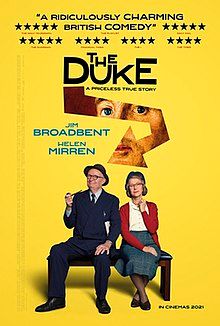
I am sure The Duke would not have gotten made in Hollywood in these times, and no, not even as a Netflix hyped-up caper film. In fact, I am not sure how this film got made in Tory Britain. The director, Roger Mitchell passed September, 22, 2021, and this gem was his last gift to us. Mitchell often frames shots in this film like a 1950s TV show. Visually, the film is a series of boxes and even the exterior scenes seem to have buildings leaning in or a heavy British sky spitting rain.
The plot is well-known. An older man, played warmly and comically by Jim Broadbent, who has been, as he says, "'tackling social injustice" his entire life, is accused of stealing a priceless Goya painting to finance free BBC television for the elderly. His forbearing wife, who supports the family by working as a house cleaner, is played perfectly by Helen Mirren. She clearly loves her husband and her two sons, but she is at the end of her wits with her husband's political campaigns and his erratic behaviors which make him unemployable. His two sons are often in trouble with the police as they grow into men trying to make a few dollars in an impoverished neighborhood. The writing is perfectly understated and the acting spot-on.
There are a few surprises in the plot, but they hardly matter, because this film is about how people of a certain time and of a certain economic level continue to love and protect each other. The film is funny, warm, and safe for humans.
It is playing in smaller theaters now and will be streaming soon. Highly recommended.
INTERVIEW
Critically praised biographer Carol Sklenicka
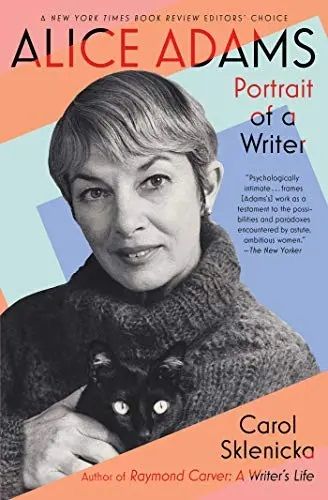

"I became a biographer." - Carol Sklenicka
I was honored when Carol Sklenicka agreed to an interview. Her critically praised biographies Alice Adams: Portrait of a Writer and Raymond Carver: A Writer’s Life, both published by Scribner, derive from her fascination with interconnections between life and art.
Her Alice Adams was chosen by The New York Times as one of “Nine Books to Watch for in December” of 2019, while the Times Book Review named her Raymond Carver one of the “Best 10 Books of 2009.”
Sklenicka earned a Ph.D. at Washington University in St. Louis and taught literature and writing at the Milwaukee Institute of Art and Design and Marquette University. Now she lives in Sonoma County, California.
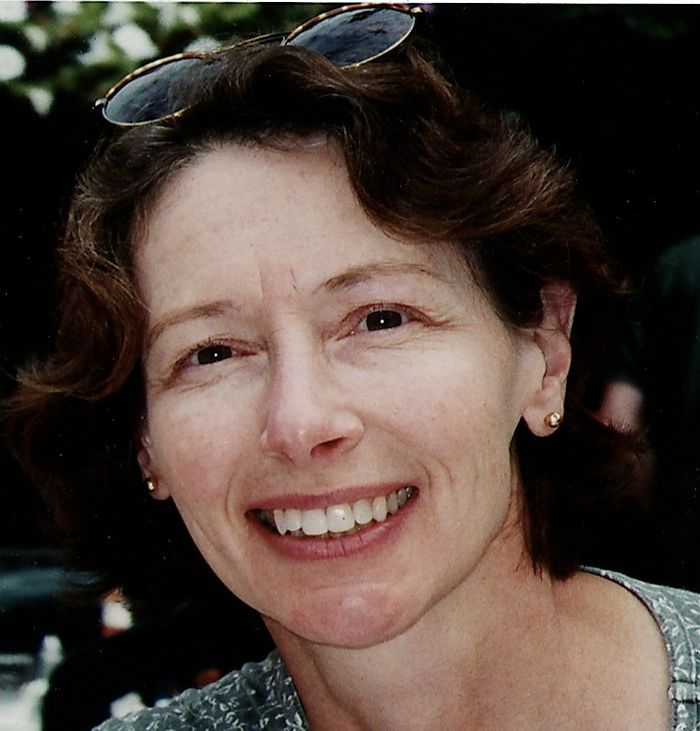
Dan: Your writing always feels personal to me and urgent. You have a great feel for story. How did you evolve into a biographer?
"... and require both storytelling and literary criticism."
Carol: I’ve been writing since I retreated from adolescence into the journalism room at Santa Maria High School (California) in the mid-Sixties. I wasn’t yet much of a reader but some inspiring college professors changed that. My English major led to teaching high school. That wore me down after three years, so I tried out grad school at the Bread Loaf School of English, then enrolled at Washington University in St. Louis; there I studied with brilliant and kind Naomi Lebowitz, brilliant but difficult Stanley Elkin, and wise and avuncular Howard Nemerov.
I finished my Ph.D. with a thesis about D. H. Lawrence and wrote short stories (some published and prize-winning) and a novel (unpublished). You would be wrong if you think these facts reflect a career plan. My moves were determined by my first marriage, a divorce, my second marriage with the poet R. M. Ryan, and our two children, and my determined but unfocussed literary ambition.
I’d read Will You Please Be Quiet, Please? by Raymond Carver when it first came out. It occurred to me that writing a biography of Carver would let me revisit my west coast roots and require both storytelling and literary criticism. I became a biographer.
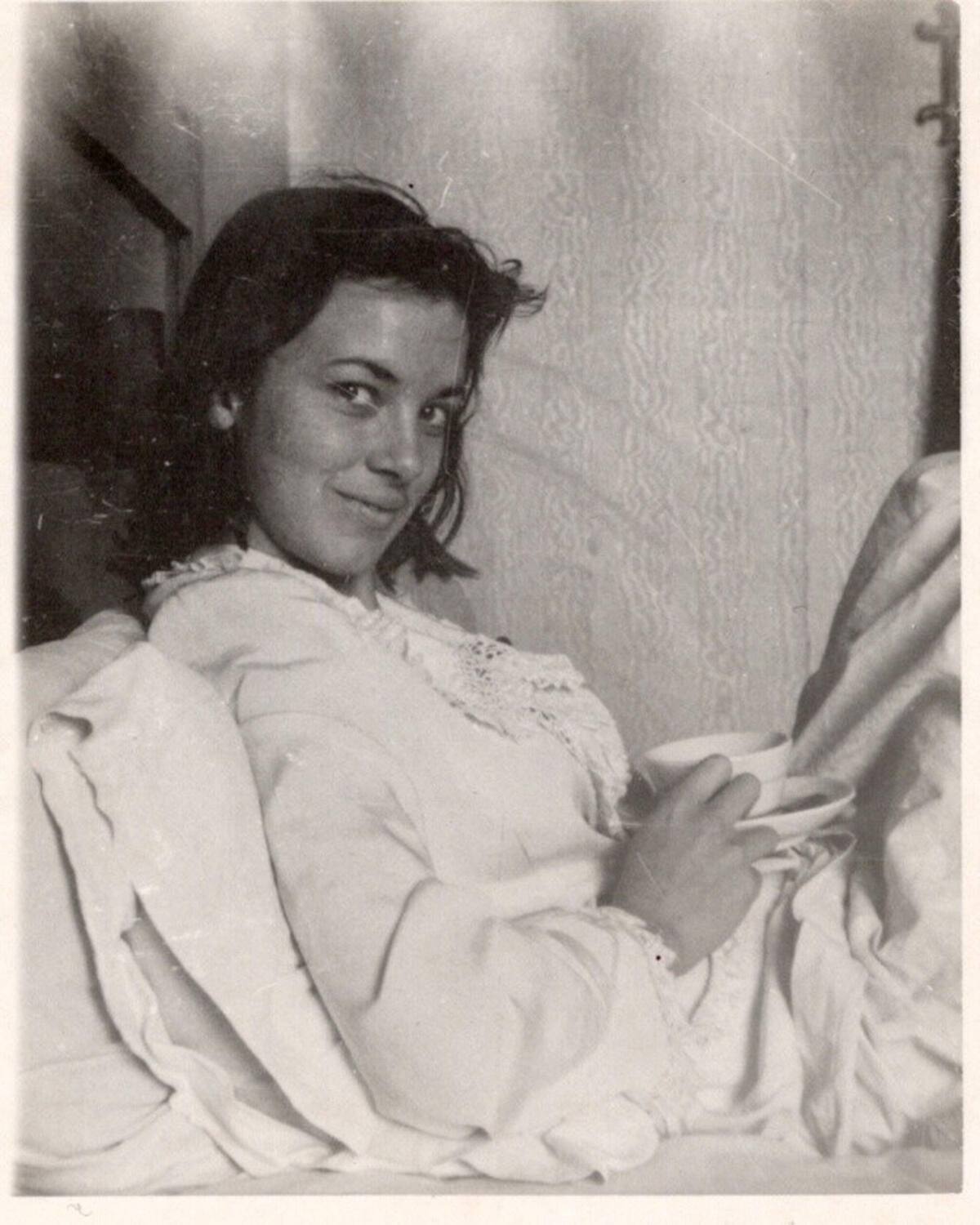
Dan: I was very moved by your biography of Alice Adams. You vividly described her dedication to the craft of fiction writing and her sustained battle for a place at the literary feast while she was discounted by other writers like Mailer and multiple male editors and agents. In the right hands, I think this biography would make a wonderful movie. I knew some of Adam's short stories from anthologies, but I had no idea what a pioneer she was. What drew you to Alice Adams as a subject?
"Adams was fascinated by memory, as I am."
Carol: From doing my biography of Carver I’d learned: how difficult it was for a working-class guy to make it in the literary world, how to resist an opposed estate, how bad severe alcoholism can get. I decided my next subject would be a woman--and not an alcoholic. I was interested in the San Francisco area because I’d recently moved to northern California. When I reread Alice Adams’s first story collection, Beautiful Girl, I was blown away by the subtlety and innovation of those stories. Adams was fascinated by memory, as I am. She ignored rules that writers who came up through the workshop system observed. The richness and complexity of her life (still then undocumented) were evident in the confident narration and brilliant layering of her best stories. Research showed me what grit it took for her to survive the indignities of the mid-century and become a feminist pioneer.
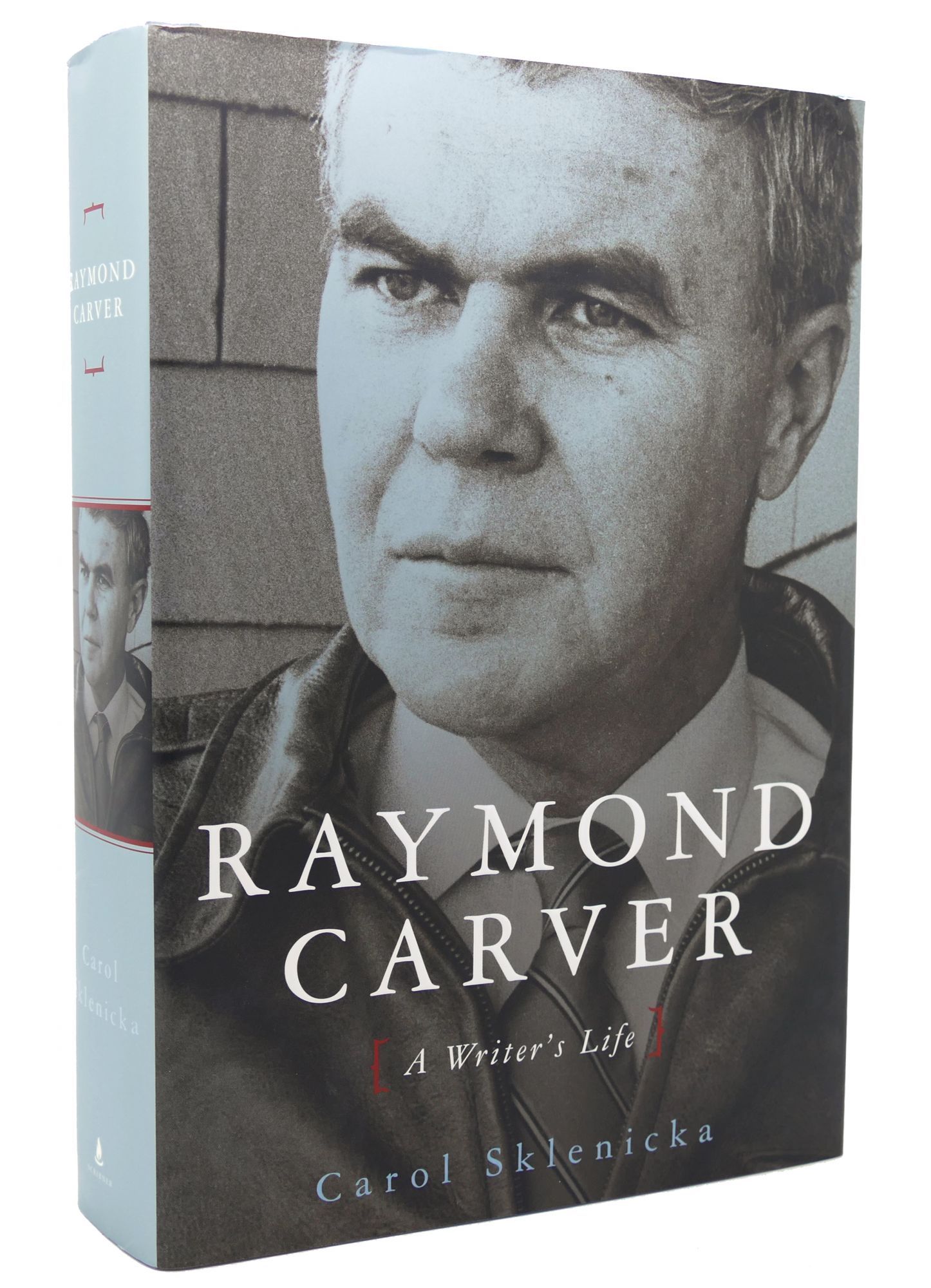
Dan: You interviewed me for your Raymond Carver biography. (I was Ray's friend for a few years when he was still drinking.) Carver was a master at keeping his friends in different silos. I was impressed by how you gathered your information and how thorough you were. Your book is definitive. I personally know that, but honestly do not know how you did it. My question is, after you have chosen your subject, how do you begin your research? Do you start with interviews? Do you start with their papers? How do you do it?
"A couple of them believed in what I was doing and helped me."
Carol: I started with what was published—Carver’s own work, some interviews and profiles. There was a picture book called Carver Country: artistic, mostly black and white photos in the mode of Walker Evans. A fine book but it did not tell me how Carver with his fierce writing ambitions emerged from that place and those people. So I went to Yakima, Washington. A newspaper reporter who barely knew Carver showed me around. Over several trips, I found and interviewed people who hadn’t rehearsed their stories. There were tunnels between the silos. One person sent me on to another. It was an exercise in suspending judgment while at the same time hoisting myself up for a wider view. The people who knew Ray as a drunk were more willing to talk than those who knew him later but eventually hundreds of people talked. A couple of them believed in what I was doing and helped me find the support I needed from the publishing world.
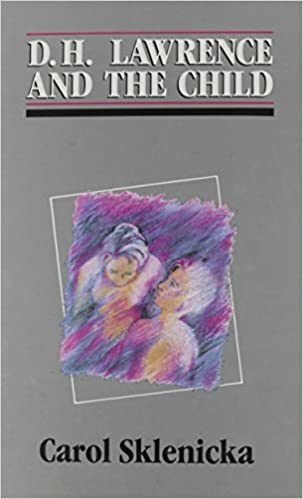
Dan: I read your analysis of D.H Lawrence's use of children and child imagery in your book D.H Lawrence and The Child published by the University of Missouri Press. In order to write that book, it seems to me you had to deeply know and understand the details of his life. It is, in a sense, a biography, but one where you challenged yourself to delve deep into the inner life of a writer. How did writing that book prepare you to write your other biographies? And also, what do you recommend to other writers who are interested in writing biographies? How should they begin?
"... that book and Lawrence himself taught me about persistence."
Carol: No one ever asked me this before! When I met Colin Harrison, who edited Raymond Carver, he said it was important that I’d actually finished a book before. Otherwise, he said, he wouldn’t believe that I could finish this one. I think that book and Lawrence himself taught me about persistence. But my question in choosing the topic for my dissertation (which become this book) was: how could Lawrence, a man who had no children and was obnoxiously jealous of his wife’s love for hers, write so beautifully about the interior lives of children? Paul Morel in Sons and Lovers is a version of Lawrence, but what about my favorite, luminescent Anna Brangwen in The Rainbow? How did he do it? Pure feeling and imagination, I suppose.
Dare I say the obvious? Someone interested in writing biographies should read many biographies, and find models. They should choose a subject they really want to know about but also check around to see if anyone else is already doing that subject. They could join the Biographers International Organization (biographersinternational.org) which offers conferences and panels and a roster of biographers, including myself, who do freelance coaching and editing. It’s a welcoming group for writers inside and outside of the academy who want to write about politicians, artists, scientists, and entertainers. The focus is on the craft rather than the subjects.
Dan: Thank you so much for your time, Carol. It was a pleasure.
Alice Adams: Portrait of a Writer and Raymond Carver: A Writer’s Life are available on Amazon, on other bookselling platforms, and on order through local bookstores. D.H. Lawrence and The Child is available on the University of Missouri Press website. Carol Sklenicka can be followed on Goodreads / Twitter @carolsklenicka1 / on Facebook at carol.sklenicka / the Facebook Alice Adams fan page is at AuthorAliceAdams.
(Book, music, & screen reviews, & interviews, & fiction are in play at dandomench.com - a forever free secure site with the highest standards of privacy available. Your free login is your email and name - the only information the site retains. Your participation is not public. You are never tracked or your email shared. Thank you if choose to contribute. Your payment information is never stored here. Add this website to your address book or drag the newsletter from your spam folder to your primary folder so we can stay in touch. You can contact me at dandomench@gmail.com. I will respond as quickly as possible. Thank you!)
